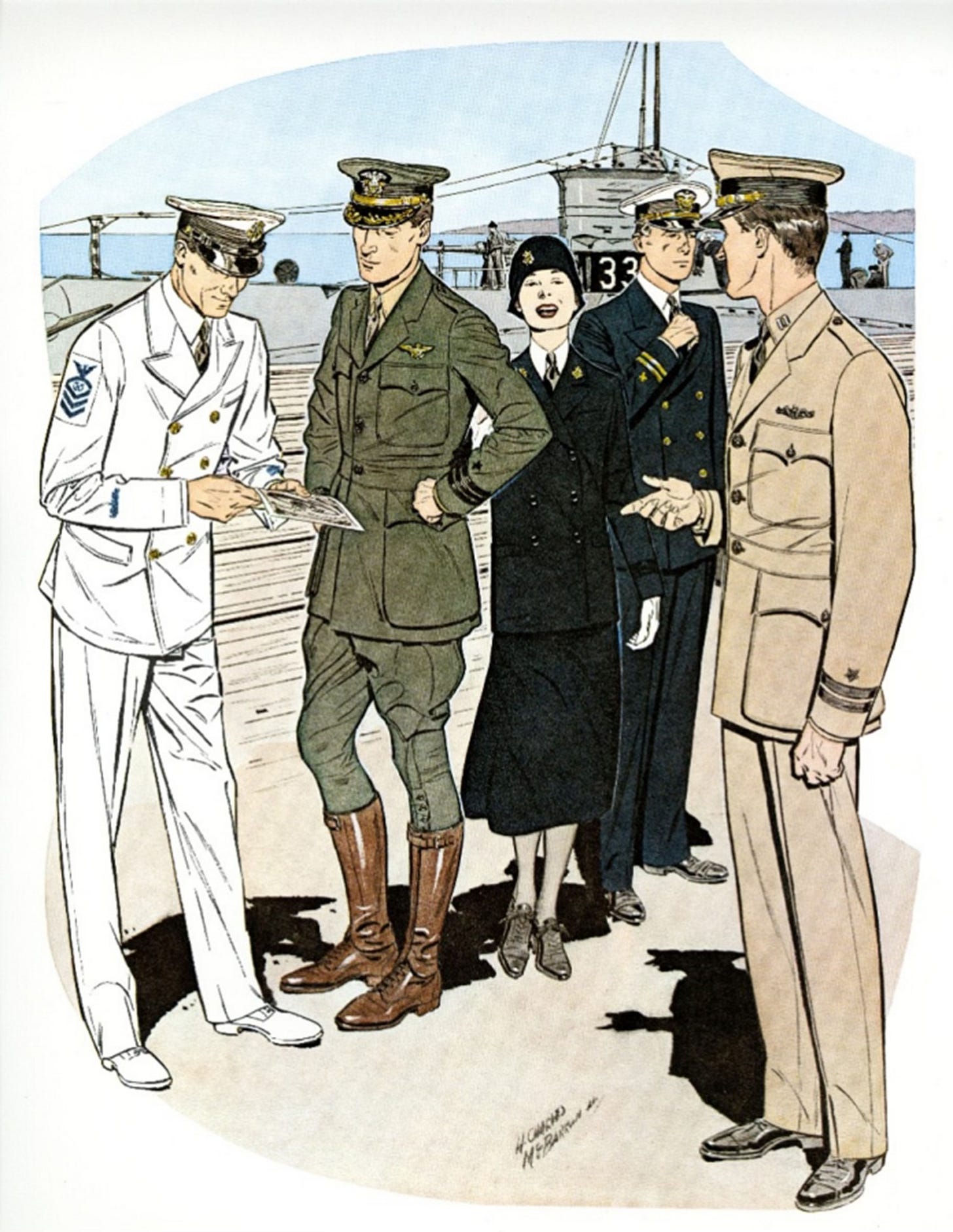
In every Navy base around the world and on all the naval ships at sea, from the sailors to the officers, everyone wears black shoes. Everyone except the Airdales, the naval aviators. They wear brown shoes.
The story of their divergent footwear begins at North Island.
Naval aviation officially began when the secretary of the Navy ordered a “Flying Machine” from the Wright Brothers on May 8, 1911. A subsequent order included the acceptance of Glenn Curtiss’ offer to train Army and Navy personnel to fly at the Curtis School of Aviation, which is now North Island Naval Air Station.
The Navy selected six commissioned officers for training. The first aviator trainees came from the surface fleet and wore uniform low-quarter, square-toed, black, roughout leather shoes. On the coal-burning ships, shoes were commonly covered by soot from the ships’ stacks so black roughout leather served the sailors well.
Unlike the Navy, Army officers wore brown shoes and were comfortable on the dirt fields of North Island. The Navy officers found themselves in a foreign environment. The sand and scrub flats of Coronado produced large amounts of dust on shoes and boots, and officers found themselves constantly being told by superiors to clean their footwear.
Not only was the constant cleaning an irritation, so was the comparison with the Army trainees. The Navy men decided that changing to brown high-top shoes with brown leggings was their solution. On a Saturday morning, the group located a cobbler in San Diego and commissioned the shoes.
The men were now faced with the issue of gaining approval from their superiors. They concluded that a petition was the best method to get acceptance. Fortunately, their supervisors agreed, and the petition was forwarded to the Bureau of Navy Personnel for consideration.
On Nov. 13, 1913, the Navy approved the change to uniform regulations and included the brown shoes as part of the permanent uniform for aviators. Brown shoes became standard issue for pilots until July 1976, except for a brief period during World War II, when production was terminated due to other priorities. At the end of the war in 1945, brown shoes were issued again.

It was Adm. Elmo Zumwalt Jr., the Chief of Naval Operations from July 1970 to July 1974, who decided to remove brown shoes from the list of authorized footwear. (Zumwalt was an admiral from the surface fleet and wore black shoes.) His decree went into effect on July 1, 1976.
Since their introduction in 1913, brown shoes had become integral to the culture of naval aviation, so their elimination was devastating to the fliers.
Lt. Cmdr. William L. Estes was flying with Training Squadron Ten, based at Naval Air Station Pensacola, Florida, in September 1979. He was a flight instructor with a keen interest in history and, as one of those offended, began initiatives to resurrect the brown shoes.
Estes started by taking several training flights to the Naval Archives at Navy Personnel Command in Washington, D.C. there, he researched the original aviators’ petition to help author the same thoughts to resurrect the policy. His commanding officer, Capt. Jude J. Lahr, approved of his initiative and was the first to sign the petition. Soon the list included signatures of senior command members and commanding officers. Commands throughout the United States and the world, as well as deployed aircraft carriers requested the petition be sent to them for signing.
Estes was reassigned to the USS Midway, where he continued the initiative. After 2½ years on the Midway, Estes returned to Pensacola.
“On the morning of Sept.12, 1985, while airborne on a training flight with a student, I received a radio call from the squadron duty officer to ‘buster,’ (immediately!) return to base with no explanation. On arriving at the squadron, I was met by the Skipper who escorted me to his office. Moments later, we received a telephone call from the Secretary of the Navy, the Honorable John F. Lehman Jr. (a Tailhooker himself) who congratulated me as being the spearhead in resurrecting the brown shoes back to the Airdales,” Estes wrote in a letter.
Lehman was planning to announce the reinstitution of the brown shoes at the 1985 Tailhook Convention and authorized Estes to be the first to wear brown shoes before his declaration.
The U.S. Naval Institute reminds its 86,000 followers on X (formerly known as Twitter), that “shoe color marks a cultural divide.” Each Dec. 4 that distinction is emphasized with Wear Brown Shoes Day.
R.G. Head is a retired Air Force brigadier general living in Coronado.




